In response to the number of gay teen suicides across the United States, efforts like the “It Gets Better Project” have sprung up online. Locally there are several resources available to young lesbian, gay, bisexual, transgendered (LGBT) Chicagoans.
A minor who lives on Chicago’s North Side and decides to come out can find support and information at several locations. Lakeview’s Center on Halsted is the city’s first community center geared toward homosexual Americans, and is located in a neighborhood recognized as the nation’s first officially-recognized “gay village.” The center offers after-school and weekend youth group meetings. At Howard Brown’s Broadway Youth Center (3179 N. Broadway), LGBT teens have the option to receive counseling, STD testing, shower, or just hang out (hours are varied).
The Chicago Public Schools’ online Student Policy Handbook was modified in late July 2010 to include gay-bullying, sexual harassment and discrimination. This means that, at least on paper, young LGBT Chicagoans should feel protected in any public school.
Because LGBT youth often face hostility from their classmates, several gay-straight alliances (GSA) have been in existence in Chicago for more than a dozen years. The first such group was formed at Whitney Young High School, in 1996. Lane Tech, Senn, Mather and Walter Payton College Prep high schools have GSAs. The South Loop’s Jones College Prep, itself headed by an openly-gay principal, began its own GSA in 1999.
But what about Chicago LGBT youth on the South Side? Though the resources aren’t as out in the open, they are there.
Currently, there are high school GSAs near the Back of the Yards at Curie Metropolitan (4959 S. Archer) and Thomas Kelly (4136 S. California) high schools.
To the east are the University of Chicago Charter Schools. According to Math Department Chair Joshuah Thurbee, Woodlawn School (serving grades 6-12) will be starting an LGBT after-school program next month. Additionally, there is a “Parents and Friends of Lesbians And Gays” (PFLAG) chapter at 5400 South Kimbark, to support LGBT youth who need assistance in educating those in their lives on what’s happening to them.
Education is the key, says Peace And Education Coalition Alternative High School Principal Brigitte Swenson. Creating a safe learning space for LGBT youth, she said, is “not just a North Side issue.”
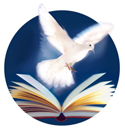
The Peace And Education Coalition Alternative High School has two campuses: Upton Sinclair, located at 4946 S. Paulina, and Second Chance, at 4747 S. Marshfield. Though their main purpose is to serve under-achieving students who are “farmed” out of the larger public schools because they are 20 or 21 and haven’t graduated yet, Swenson says that LGBT students do seek them out.
“They may not say that the reason why they weren’t successful with their traditional high school was because of their sexuality,” Swenson said. “But they will have other reasons that contribute to it: family problems, or not having a consistent place to live.”
“We see everything,” Swenson continued, “and sexuality is a huge issue. I think that some kids don’t even know that they’re struggling with it, they can’t even verbalize it.”
Violence, gang and otherwise, is a big issue in the Back of the Yards neighborhood; the Peace and Education Coalition schools have a zero-tolerance policy as a result. Swenson said that during her 13 years in the program, she’s seen only about one act of violence a year. The students involved were usually withdrawn from the program, serving as a deterrent to the others.
“You’ll hear a lot of talk in our program about, ‘You’re not worth me getting kicked out of this school, so I’m just going to forget it,’” Swenson said. “And I tell the kids, ‘If that helps you save face, then that’s fine.’”
And LGBT discrimination? “The staff and the school are really communicative with the kids, and if we hear things that are happening, we don’t ignore it. We bring it in, we do a ‘sit around the table, let’s talk about this … What does this mean?’”
Nearby, Holy Cross Church (4541 S. Wood) and Precious Blood Ministry of Reconciliation both also offer assistance to LGBT youth without publicizing this service. They provide counseling and resources to young people struggling with violence, bullying and homelessness — all issues that touch LGBT youth.
On the P&EC’s collaboration with Holy Cross, Swenson said, “I think what you’re going to find in this neighborhood is a lot of tolerance. We’re dealing with a lot of different kids with a lot of different issues. If we have a young gay student who is struggling, people are going to reach out to help him. And the church — not this church — isn’t going to turn its back.”
P&EC LGBT students’ feedback indicates that they feel safer in a smaller school environment, if not a bit more ostracized. But, Swenson said, things are changing.
“It’s more of a curiosity thing. Maybe it is that ‘South Side versus North Side’ thing; they are kind of sheltered. But more and more we find kids who speak out in class, on tolerance and understanding: ‘My cousin is gay,’ or ‘my sister is a lesbian’… Usually when there is talk, it’s about ignorance, and then we try to make an effort to educate the kids.
We say, ‘this school is here for everybody.’”
Related articles
- LGBT Community Mourns String of Suicides (chicagoist.com)
- Dan Savage Tells LGBT Youth “It Gets Better” (chicagoist.com)




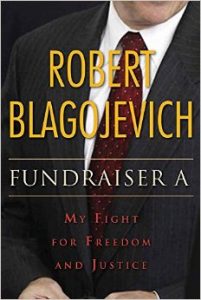
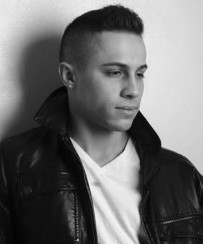
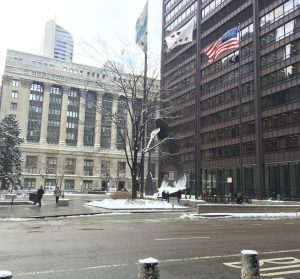
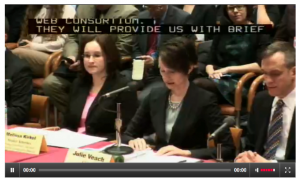
Be First to Comment